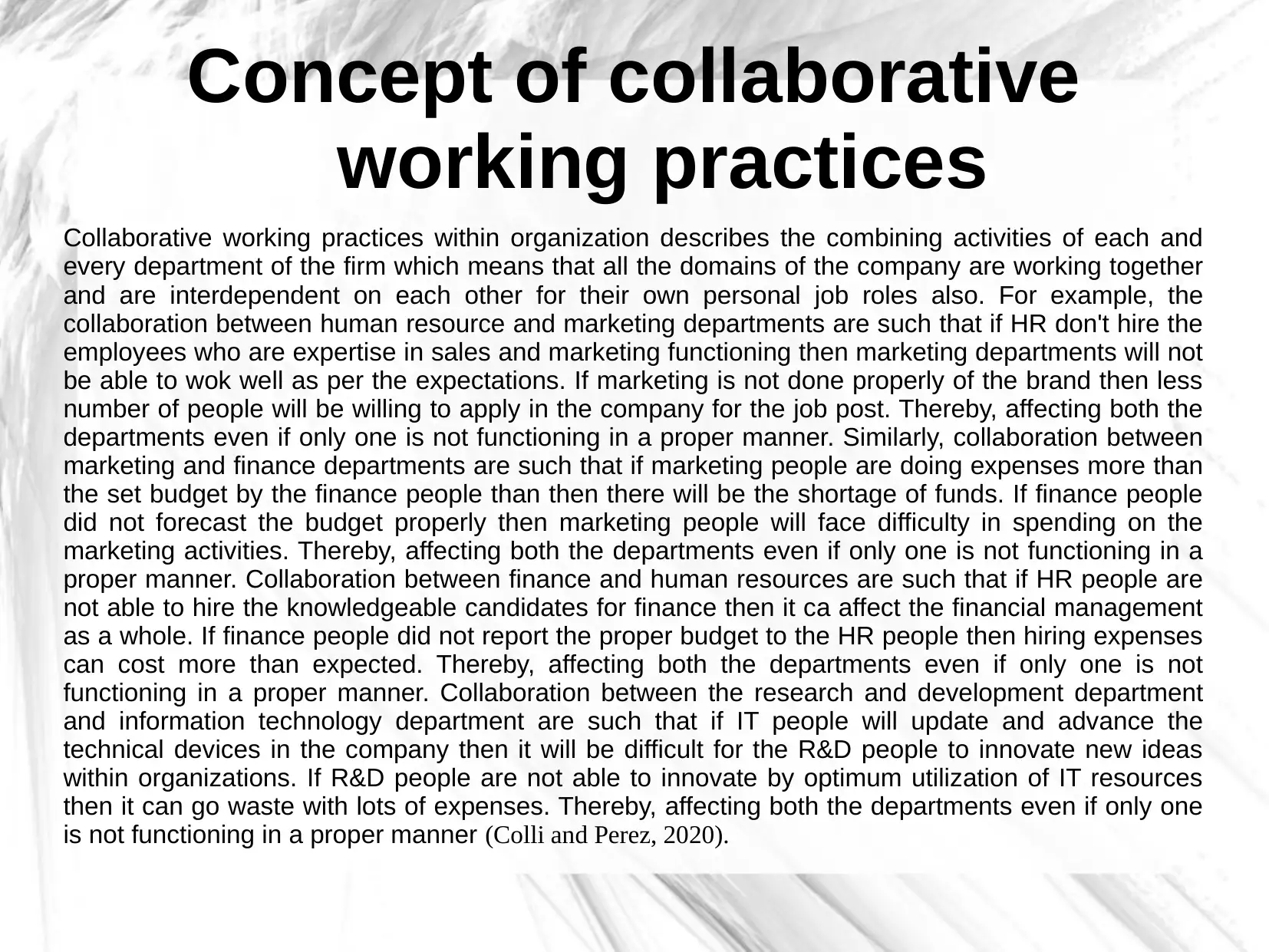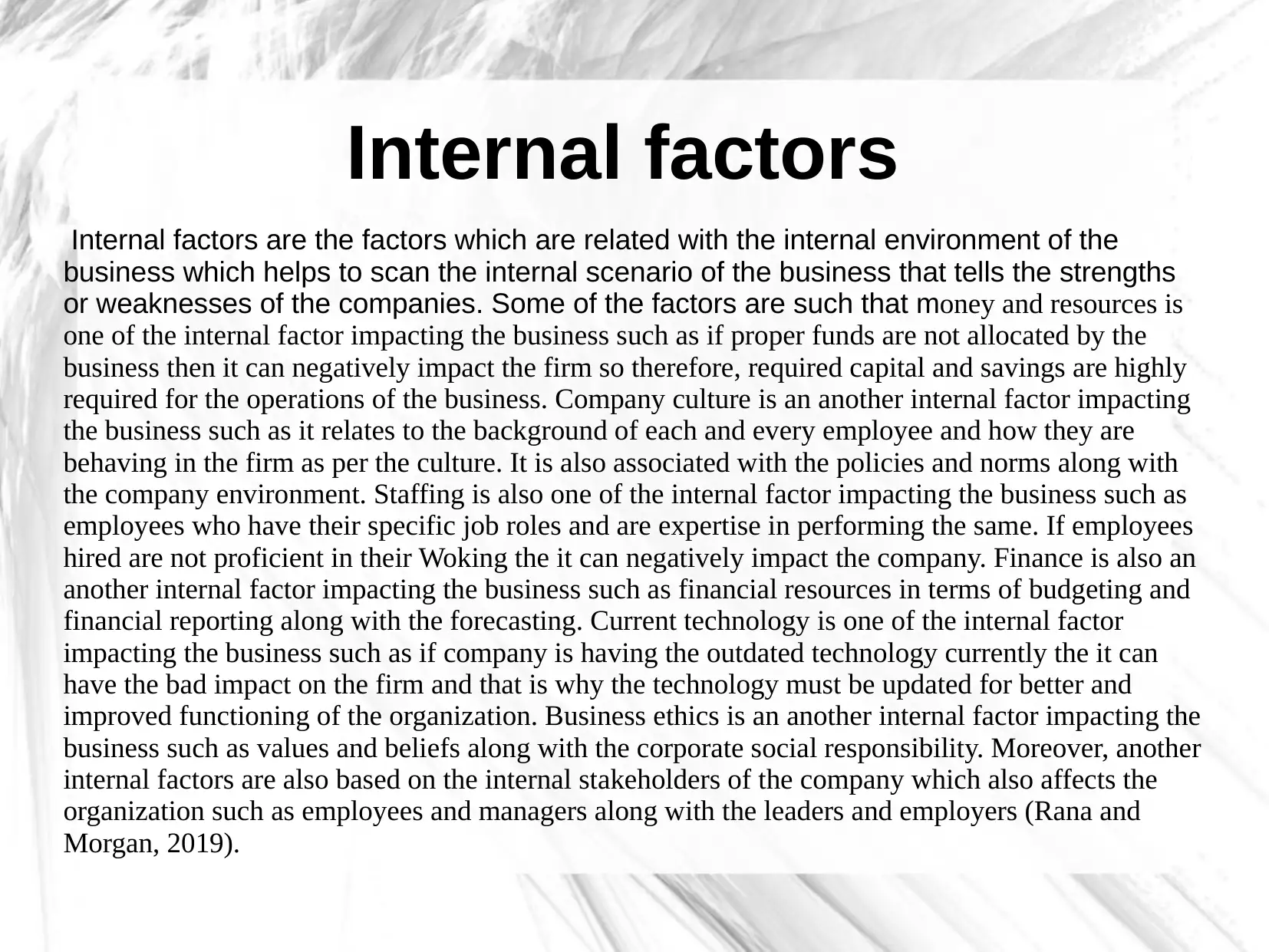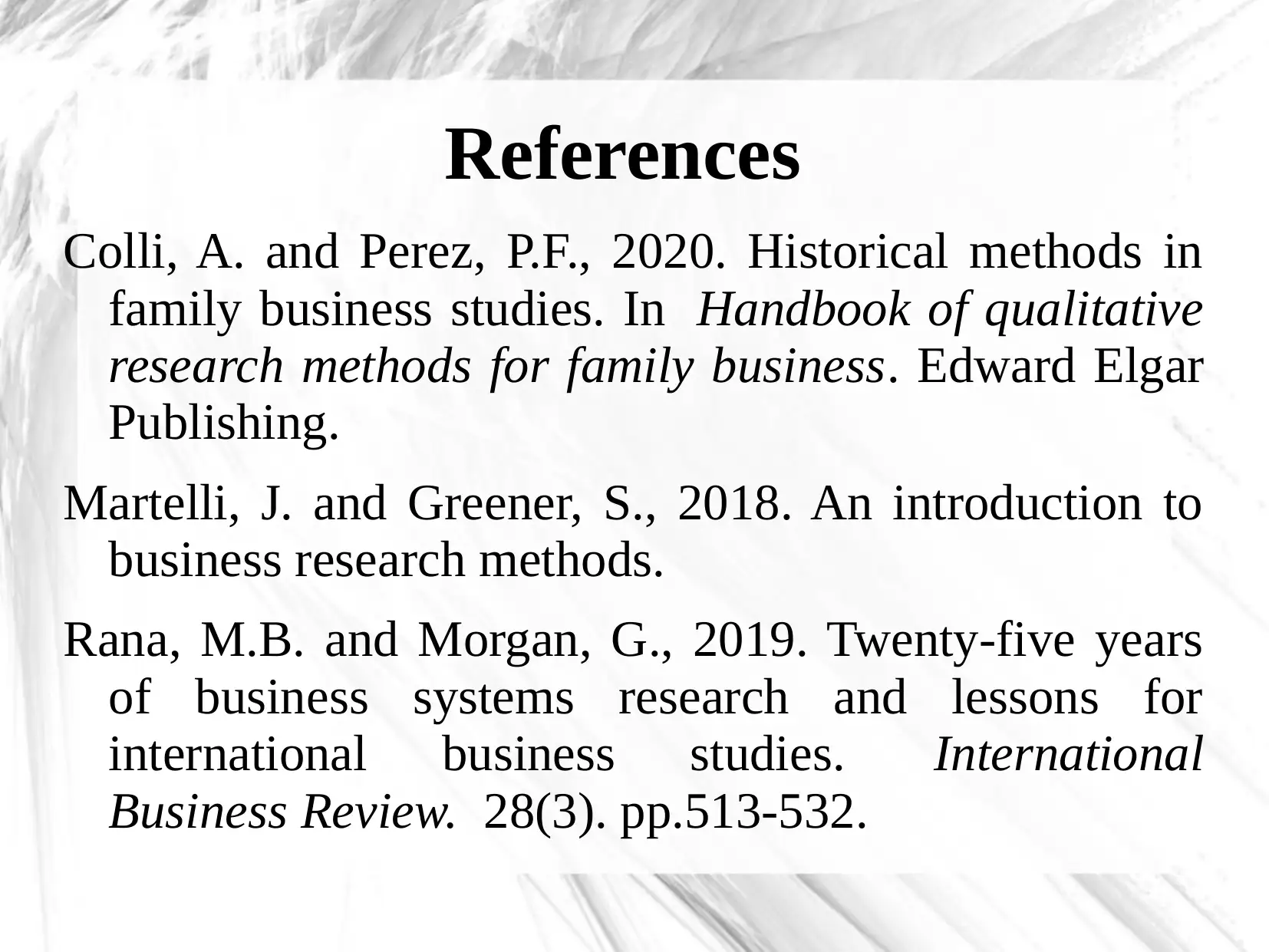FY021 - Business Studies: Analyzing Internal & External Factors
VerifiedAdded on 2023/06/18
|6
|1144
|72
Report
AI Summary
This report provides an analysis of the internal and external factors that impact business operations, with a focus on the concept of collaborative working practices. It details how various departments within an organization are interdependent and how their collaboration affects overall performance. Internal factors discussed include money and resources, company culture, staffing, finance, current technology, and business ethics. External factors cover political, economic, social, technological, legal, and environmental elements. The report emphasizes how these factors, influenced by both internal and external stakeholders, shape the opportunities and threats faced by businesses. Desklib offers a platform for students to access similar solved assignments and study resources.

FY021 Introduction to Business
Studies
Studies
Paraphrase This Document
Need a fresh take? Get an instant paraphrase of this document with our AI Paraphraser

Task 1: Internal and external
factors which
impact on business
factors which
impact on business

Concept of collaborative
working practices
Collaborative working practices within organization describes the combining activities of each and
every department of the firm which means that all the domains of the company are working together
and are interdependent on each other for their own personal job roles also. For example, the
collaboration between human resource and marketing departments are such that if HR don't hire the
employees who are expertise in sales and marketing functioning then marketing departments will not
be able to wok well as per the expectations. If marketing is not done properly of the brand then less
number of people will be willing to apply in the company for the job post. Thereby, affecting both the
departments even if only one is not functioning in a proper manner. Similarly, collaboration between
marketing and finance departments are such that if marketing people are doing expenses more than
the set budget by the finance people than then there will be the shortage of funds. If finance people
did not forecast the budget properly then marketing people will face difficulty in spending on the
marketing activities. Thereby, affecting both the departments even if only one is not functioning in a
proper manner. Collaboration between finance and human resources are such that if HR people are
not able to hire the knowledgeable candidates for finance then it ca affect the financial management
as a whole. If finance people did not report the proper budget to the HR people then hiring expenses
can cost more than expected. Thereby, affecting both the departments even if only one is not
functioning in a proper manner. Collaboration between the research and development department
and information technology department are such that if IT people will update and advance the
technical devices in the company then it will be difficult for the R&D people to innovate new ideas
within organizations. If R&D people are not able to innovate by optimum utilization of IT resources
then it can go waste with lots of expenses. Thereby, affecting both the departments even if only one
is not functioning in a proper manner (Colli and Perez, 2020).
working practices
Collaborative working practices within organization describes the combining activities of each and
every department of the firm which means that all the domains of the company are working together
and are interdependent on each other for their own personal job roles also. For example, the
collaboration between human resource and marketing departments are such that if HR don't hire the
employees who are expertise in sales and marketing functioning then marketing departments will not
be able to wok well as per the expectations. If marketing is not done properly of the brand then less
number of people will be willing to apply in the company for the job post. Thereby, affecting both the
departments even if only one is not functioning in a proper manner. Similarly, collaboration between
marketing and finance departments are such that if marketing people are doing expenses more than
the set budget by the finance people than then there will be the shortage of funds. If finance people
did not forecast the budget properly then marketing people will face difficulty in spending on the
marketing activities. Thereby, affecting both the departments even if only one is not functioning in a
proper manner. Collaboration between finance and human resources are such that if HR people are
not able to hire the knowledgeable candidates for finance then it ca affect the financial management
as a whole. If finance people did not report the proper budget to the HR people then hiring expenses
can cost more than expected. Thereby, affecting both the departments even if only one is not
functioning in a proper manner. Collaboration between the research and development department
and information technology department are such that if IT people will update and advance the
technical devices in the company then it will be difficult for the R&D people to innovate new ideas
within organizations. If R&D people are not able to innovate by optimum utilization of IT resources
then it can go waste with lots of expenses. Thereby, affecting both the departments even if only one
is not functioning in a proper manner (Colli and Perez, 2020).
⊘ This is a preview!⊘
Do you want full access?
Subscribe today to unlock all pages.

Trusted by 1+ million students worldwide

Internal factors
Internal factors are the factors which are related with the internal environment of the
business which helps to scan the internal scenario of the business that tells the strengths
or weaknesses of the companies. Some of the factors are such that money and resources is
one of the internal factor impacting the business such as if proper funds are not allocated by the
business then it can negatively impact the firm so therefore, required capital and savings are highly
required for the operations of the business. Company culture is an another internal factor impacting
the business such as it relates to the background of each and every employee and how they are
behaving in the firm as per the culture. It is also associated with the policies and norms along with
the company environment. Staffing is also one of the internal factor impacting the business such as
employees who have their specific job roles and are expertise in performing the same. If employees
hired are not proficient in their Woking the it can negatively impact the company. Finance is also an
another internal factor impacting the business such as financial resources in terms of budgeting and
financial reporting along with the forecasting. Current technology is one of the internal factor
impacting the business such as if company is having the outdated technology currently the it can
have the bad impact on the firm and that is why the technology must be updated for better and
improved functioning of the organization. Business ethics is an another internal factor impacting the
business such as values and beliefs along with the corporate social responsibility. Moreover, another
internal factors are also based on the internal stakeholders of the company which also affects the
organization such as employees and managers along with the leaders and employers (Rana and
Morgan, 2019).
Internal factors are the factors which are related with the internal environment of the
business which helps to scan the internal scenario of the business that tells the strengths
or weaknesses of the companies. Some of the factors are such that money and resources is
one of the internal factor impacting the business such as if proper funds are not allocated by the
business then it can negatively impact the firm so therefore, required capital and savings are highly
required for the operations of the business. Company culture is an another internal factor impacting
the business such as it relates to the background of each and every employee and how they are
behaving in the firm as per the culture. It is also associated with the policies and norms along with
the company environment. Staffing is also one of the internal factor impacting the business such as
employees who have their specific job roles and are expertise in performing the same. If employees
hired are not proficient in their Woking the it can negatively impact the company. Finance is also an
another internal factor impacting the business such as financial resources in terms of budgeting and
financial reporting along with the forecasting. Current technology is one of the internal factor
impacting the business such as if company is having the outdated technology currently the it can
have the bad impact on the firm and that is why the technology must be updated for better and
improved functioning of the organization. Business ethics is an another internal factor impacting the
business such as values and beliefs along with the corporate social responsibility. Moreover, another
internal factors are also based on the internal stakeholders of the company which also affects the
organization such as employees and managers along with the leaders and employers (Rana and
Morgan, 2019).
Paraphrase This Document
Need a fresh take? Get an instant paraphrase of this document with our AI Paraphraser

External factors
External factors are the factors which are related with the external environment of the business
which helps to scan the external scenario of the business that tells the opportunities or threats to the
companies. Some of the factors are political factors which are regulated and controlled by the
governments policies such as tax policy and environmental regulations along with the trade
restrictions and reform which is followed by the tariffs and political stability. Economical factors are
associated with the economy of the nation and businesses operating under it such as economic
growth and decline along with the rate of interest and exchange rate which is followed by the inflation
and deflation and also the wage rates. Moreover, working hours and unemployment along with the
credit availability and cost of living. Social factors are related with the people living in the country and
are the target market of industries such as cultural norms and expectation along with the health
consciousness and population growth rates which is followed by the age distribution and career
attitudes and also the safety. Technological factors are associated with the advanced technology and
its adoption within organization such as innovations and developments along with the artificial
intelligence and internet of things which is followed by the machine learning and automation. Legal
factors are related with various laws and legislations of the products and services of the company
such as employment laws and access to materials along with the quotas and resources which is
followed by the imports and exports and also the taxations. Environmental factors are associated
with the sustainable functions and activities of the companies such as temperature and food
pollutants along with the population density and sound which is followed by the light and parasites.
Moreover, another external factors are also based on the external stakeholders of the company
which also affects the organization such as suppliers and customers along with the competitors and
investors (Martelli and Greener, 2018).
External factors are the factors which are related with the external environment of the business
which helps to scan the external scenario of the business that tells the opportunities or threats to the
companies. Some of the factors are political factors which are regulated and controlled by the
governments policies such as tax policy and environmental regulations along with the trade
restrictions and reform which is followed by the tariffs and political stability. Economical factors are
associated with the economy of the nation and businesses operating under it such as economic
growth and decline along with the rate of interest and exchange rate which is followed by the inflation
and deflation and also the wage rates. Moreover, working hours and unemployment along with the
credit availability and cost of living. Social factors are related with the people living in the country and
are the target market of industries such as cultural norms and expectation along with the health
consciousness and population growth rates which is followed by the age distribution and career
attitudes and also the safety. Technological factors are associated with the advanced technology and
its adoption within organization such as innovations and developments along with the artificial
intelligence and internet of things which is followed by the machine learning and automation. Legal
factors are related with various laws and legislations of the products and services of the company
such as employment laws and access to materials along with the quotas and resources which is
followed by the imports and exports and also the taxations. Environmental factors are associated
with the sustainable functions and activities of the companies such as temperature and food
pollutants along with the population density and sound which is followed by the light and parasites.
Moreover, another external factors are also based on the external stakeholders of the company
which also affects the organization such as suppliers and customers along with the competitors and
investors (Martelli and Greener, 2018).

References
Colli, A. and Perez, P.F., 2020. Historical methods in
family business studies. In Handbook of qualitative
research methods for family business. Edward Elgar
Publishing.
Martelli, J. and Greener, S., 2018. An introduction to
business research methods.
Rana, M.B. and Morgan, G., 2019. Twenty-five years
of business systems research and lessons for
international business studies. International
Business Review. 28(3). pp.513-532.
Colli, A. and Perez, P.F., 2020. Historical methods in
family business studies. In Handbook of qualitative
research methods for family business. Edward Elgar
Publishing.
Martelli, J. and Greener, S., 2018. An introduction to
business research methods.
Rana, M.B. and Morgan, G., 2019. Twenty-five years
of business systems research and lessons for
international business studies. International
Business Review. 28(3). pp.513-532.
⊘ This is a preview!⊘
Do you want full access?
Subscribe today to unlock all pages.

Trusted by 1+ million students worldwide
1 out of 6
Related Documents
Your All-in-One AI-Powered Toolkit for Academic Success.
+13062052269
info@desklib.com
Available 24*7 on WhatsApp / Email
![[object Object]](/_next/static/media/star-bottom.7253800d.svg)
Unlock your academic potential
Copyright © 2020–2025 A2Z Services. All Rights Reserved. Developed and managed by ZUCOL.




